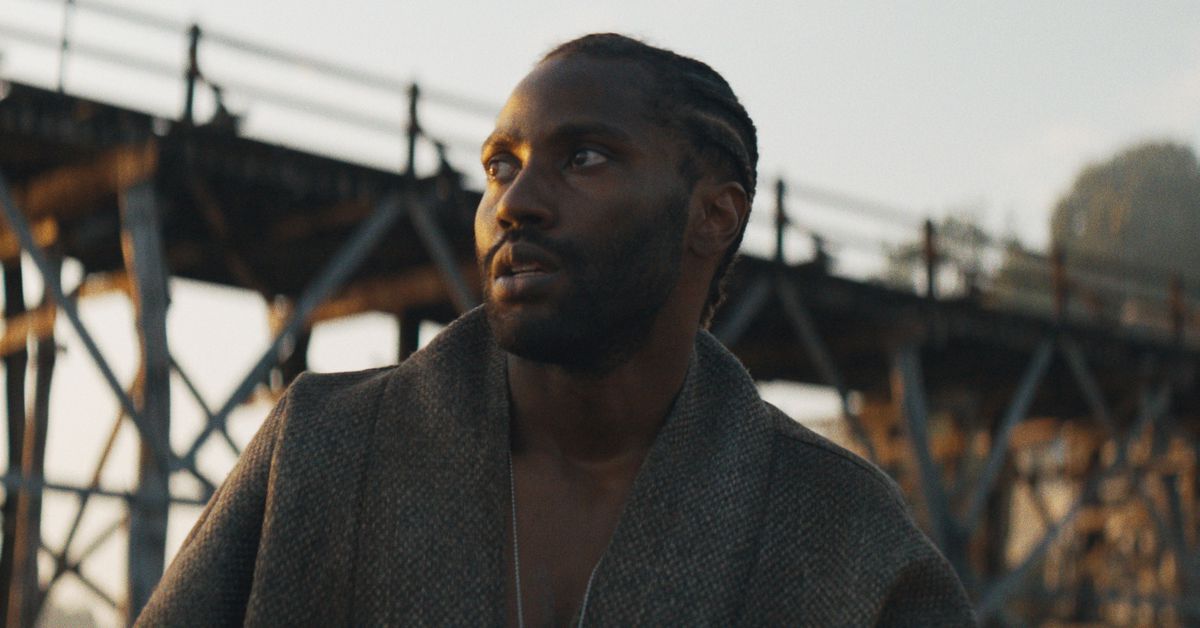I would read a book set in The Creator’s world. I’d play a tabletop role-playing game, flip through a comic book built around its setting, or play a video game anchored in its world. Its vision of a war between AI robots and humans is rich with story potential. It’s more philosophical than existential, contemplating spiritual ideas about humanity’s capacity for creation and destruction, and what we are willing to sacrifice to exercise it. And yet I’m not sure I’d watch The Creator again.
The latest film from Rogue One and Godzilla director Gareth Edwards, The Creator invites heady thoughts with its grandiose name and religious inclinations, but they buttress an overly familiar, almost archetypal premise. Following a nuclear disaster blamed on artificial intelligence, AI robots and androids (called “Sims”) are outlawed in the United States, which launches a War on Terror-esque crusade against AI and any nation that harbors it.
Tenet star John David Washington plays Joshua, an American soldier on a mission to end that war by finding and killing what he’s told is an all-powerful weapon made by Nimrata, creator of the advanced AI that powers all robots and Sims. Joshua begins to doubt his mission when he discovers that the weapon is actually an android child (Madeleine Yuna Voyles). Alphie is the first of her kind, and she has the power to control all electronics remotely — potentially a devastating weapon against the flying fortress America is using to bomb AI-friendly countries.
:no_upscale()/cdn.vox-cdn.com/uploads/chorus_asset/file/24962276/tlov_trl_F_int_ov_v19_txt_scp_709_e02_cc01_20230630_00000_copy_21.jpg)
Image: 20th Century Studios
It’s very easy to break down The Creator into a list of influences, a Pinterest board for modern science fiction cinema. Propping up its Dances with Wolves plot is a bit of Ghost in the Shell, a healthy amount of Simon Stålenhag, some Neill Blomkamp, and, of course, Blade Runner. Edwards and co-writer Chris Weitz trot out a series of classic science fiction questions in their script: What makes a being alive? What do humans owe their creations? What, if anything, will sate the hunger of the American empire?
The Creator doesn’t do enough to put an idiosyncratic spin on those questions, but it does excel in its details. Much has been made of the film’s impressive visual effects and gorgeous vistas, as captured by Edwards and his unusual two-man cinematography team, Greig Fraser and Oren Soffer. The trio works together, along with the visual effects team, to create a future that feels integrated with the natural world.
The world of The Creator isn’t quite a utopia or a dystopia — it’s a cinematic future that pauses to consider Earth’s beauty in spite of what we do on it. The film is almost entirely set in New Asia, a region formed from former Southeast Asian nations that have declared their solidarity with Sims and artificially intelligent life. Its lush, natural integration with the high-tech future stretches from the Indonesian archipelago to the Himalayas, in stark contrast with the Blade Runner-inspired concrete sprawl of Los Angeles.
:no_upscale()/cdn.vox-cdn.com/uploads/chorus_asset/file/24962734/V1_0048_frm_pull.047.jpg)
Image: 20th Century Studios
The Creator’s imagery isn’t just gorgeous, it’s denser with unpackable meaning than anything in the film’s script. That isn’t always to the movie’s benefit. Its collision of West versus East feels undercooked and borderline offensive, blending the aesthetics of monastic Buddhism with the robot future in a war with a militaristic United States. It’s arguably a misguided attempt to correct for its influences’ Orientalist paranoia that commits the same crime from another direction. The humans of New Asia have almost no voice in the story, and are entirely defined by their embrace of and existence alongside Sims.
The ideas and images in Edwards’ world are worth more than The Creator has to offer them, but his skill as a visual storyteller is at its strongest in moments rich with implication. Like the image of a massive tank leveling a forest, with U.S. Army in a slick sans-serif font on the side. Or that same army, in a war against AI, using cheerfully vocal autonomous suicide drones to bomb an AI encampment. At one point, a dead man’s mind is scanned and brought back to brief life in an android body for an urgent interrogation, and he spends his whole resurrection wrestling with his fear of dying. It might be The Creator’s most arresting scene — this man so ironically alive in the shell of a thing he fought to prove was not.
The Creator would be a wonderful video game. I mean that earnestly — video games are terrific for interacting with lore, with the bits and bobs of world-building that all storytellers spend years developing, but leave as subtext in the story proper. That can also be true of video games, but games of larger scope often flesh out their virtual worlds with said lore, which players are often free to roam and engage with. There are all sorts of ways that lore can become text — optional conversations with characters, diary and book excerpts to read, video or audio ephemera, all ambient and non-compulsory, a substrate where the player can find meaning whether the main narrative is fulfilling or not. The Creator is a fully realized future in the service of a rote story and flat characters that only gesture in compelling directions; I’d rather not bother with that story at all.
The Creator is in theaters now.

